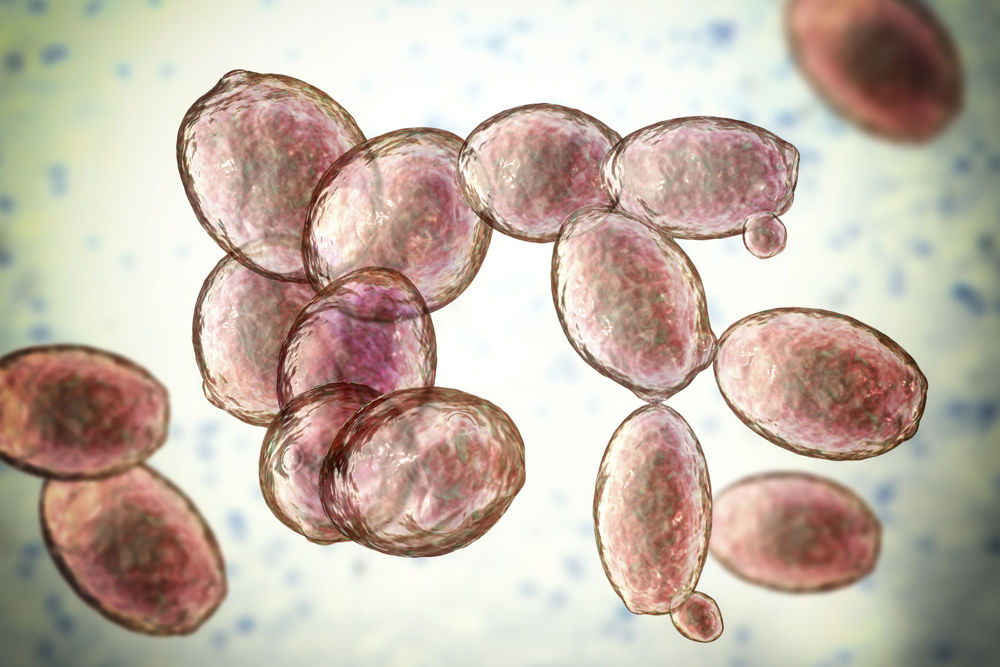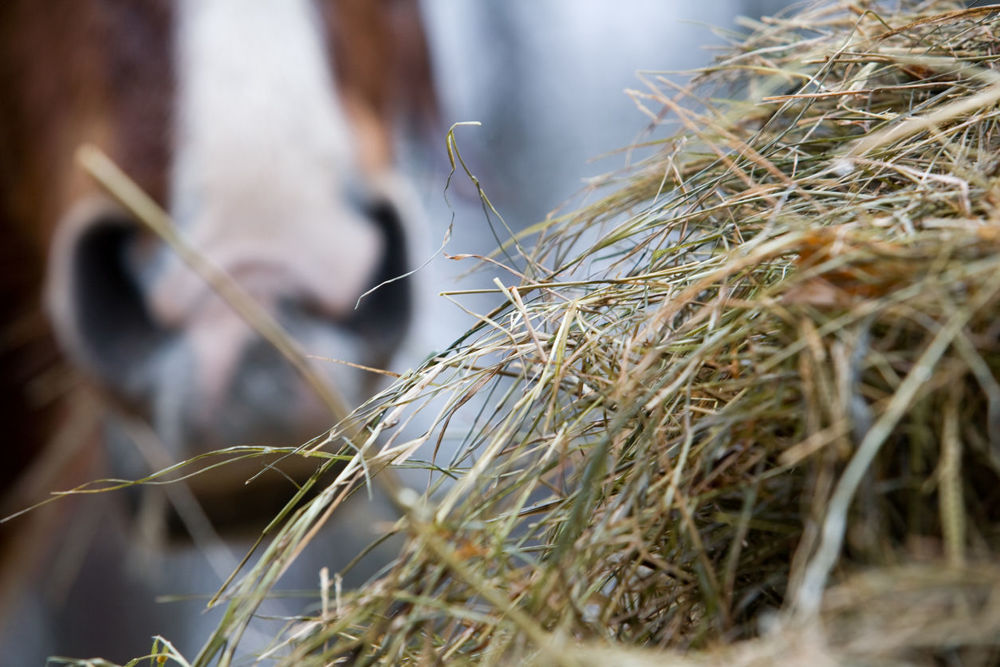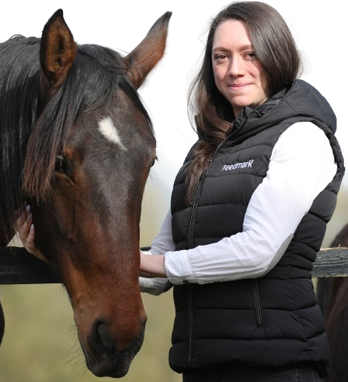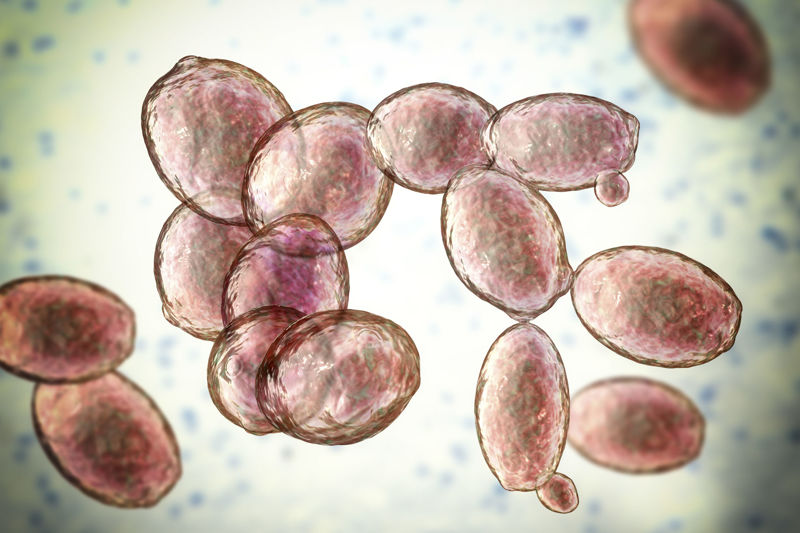Dr. Helen Warren, PhD, BSc (Hons), PGCHE, R.Anim.Sci, MRSB, BHSISM
There are numerous nutritional supplements that target intestinal health with the aim of stabilising the gut flora and reducing the susceptibility of the host to disease (Yang et al., 2009), including prebiotics, probiotics, enzymes and plant extracts (Murphy, 2017).
PROBIOTICS
The gut is home to a vast number of microorganisms, mainly bacteria. These commensal bacteria are involved in the two main functions of the gut: nutrient absorption and pathogen exclusion (competitive exclusion). The gut also has a role in immune modulation and generation of metabolites (Sanchez et al., 2017). Metchnikoff (1908) first developed the concept of what we now know as probiotics. Probiotics, known as direct-fed microbials (DFM), are defined as live microorganisms that, when offered in sufficient amounts, can confer health benefits (Borchers et al., 2009; Bermudez-Brito et al., 2012). Direct-fed microbials are strain-specific and effects of one can’t be extrapolated to another. Most DFM are strains of commensal bacteria or strains of the yeast, Saccharomyces cerevisiae. As far as bacteria go, the main bacteria used are Lactobacillus, Bifidobacterium and Enterococci despite these not being the most abundant species in the digestive tract (Schoster et al., 2014). Often the criteria for the selection of bacterial DFM include the tolerance to gastrointestinal conditions, ability to adhere to the gastrointestinal mucosa, production of antimicrobial factors and competitive exclusion of pathogens (Collins et al., 1998; Borchers et al., 2009; Schoster et al., 2014). There are various modes of action via which these DFM exert their effects, the key ones being antimicrobial, immune modulation, competitive exclusion and inhibition of bacterial toxins (Plaza-Diaz et al., 2019). Competitive exclusion refers to the competition between bacteria for receptors in the gut. Bacteria able to better compete for receptor sites may prevent the adherence and subsequent colonisation of pathogenic bacteria. There has been speculation that production of antibacterial products by DFM strains aids this competitive exclusion (Plaza-Diaz et al., 2019).
Aside from the intestinal effects, there is substantial evidence that there are immune function effects, mainly concerning modulation of inflammation (Borchers et al., 2009). The native gut microbiota modulates the immune system via the production of molecules with immunomodulatory and anti-inflammatory functions that are capable of stimulating immune cells (Plaza-Diaz et al., 2019). Certain strains of Lactobacillus used as DFMs are able to stimulate or influence production of inflammatory molecules, such as interleukins (Borchers et al., 2009). Increased levels of immunoglobulin (Ig) A have been reported in vitro and DFMs are also known to enhance immunity beyond the gastrointestinal (GI) tract through interactions with the common mucosal immune system (Wang et al., 2016). In horses, variable results have been noted. Many of the strains used in studies assessing the efficacy of DFM in horses have used bacterial strains native to the human, rather than the equine, gastrointestinal tract. Swyers et al. (2008) noted limited effects on digestibility or acidosis risk when mature Thoroughbred geldings were supplemented with either a single or multiple, mixed species of bacteria added to a low- or high-starch concentrate. Increased Copper (Cu) and Iron (Fe) digestibility was seen with both DFM treatments. A recent meta-analysis (Cooke et al., 2021) suggested no clear benefits from supplementing horses with probiotic bacteria on carbohydrate digestion or prevention of Salmonellosis. However, supplementation appeared to increase stamina in exercising horses. They also suggest that single-species DFM may not be as effective as multispecies supplementation. However, Ward et al. (2004), hypothesised that addition of Lactobacillus strains with Enterococcus faecium has the potential to reduce faecal shedding of Salmonella in hospitalised horses. Additionally, feeding a commercial probiotic product containing Lactobacillus strains, together with Bifidobacterium boum reduced incidence and duration of diarrhoea in neonatal Thoroughbreds from birth to 20 weeks of age (Tanabe et al., 2014). Despite some encouraging results with bacterial strains, currently, there are no bacterial strains registered for use in horses in Europe.

Figure 1. S. cerevisiae is a useful probiotic that stimulates cellulolytic bacteria and efficient utilisation of the fibrous portion of the horse’s diet.
The other main DFM is yeast. Yeasts reproduce by budding or fission resulting in growth by groups of single cells (Kurtzman et al., 2011). The most well-researched, Saccharomyces cerevisiae, has many diverse functions in both human and animal diets (Figure 1). Many different strains of this yeast exist and all vary slightly with regards to their effects in the animal (Newbold et al., 1995). Horses have evolved to make use of low-quality, fibrous feed material via microbial fermentation in the hindgut. This microbial ecosystem generates sources of energy via the breakdown of dietary ingredients. Volatile fatty acids (VFA) are the end-product of bacterial fermentation of carbohydrates and are absorbed across the wall of the hindgut as an energy source for the horse. Diets high in soluble carbohydrates (starch and sugar) can lead to over-production of VFA, particularly propionate and lactate and, ultimately, a drop in pH and acidosis. Cellulolytic bacteria are active within a narrow pH range (above 6.0, Russell & Wilson, 1996) and can only survive for a relatively short time below this range before their growth and activity is compromised and fibre digestion is inhibited. Interest in yeast as part of animal diets has been cited as far back as 1925 (Eckles & Williams, 1925, quoted in Newbold et al., 1995) but its mode of action was not fully understood. Over the last three decades, in-depth investigation has revealed that the main effects of yeast relate to alteration in microbial fermentation (Newbold et al., 1995). Primarily, yeast, or rather S. cerevisiae, stimulates the activity of cellulolytic bacteria (Harrison et al., 1988; Newbold et al., 1995), those that utilise lactate (Martin & Nisbet, 1992; Rossi et al., 1995), as well as total anaerobic bacteria (Newbold et al., 1995; Lascano et al., 2009) in the rumen of foregut fermenters, helping to reduce the amount of time the rumen pH falls below 5.5. The microbial ecosystem in the hindgut of the horse is similar to that of the rumen, where both cellulolytic and amylolytic bacteria degrade carbohydrates, thus addition of yeast to horse rations should yield similar benefits, providing the yeast survives the acidic and slightly alkaline environments of the gastric stomach and intestine, respectively. The majority of beneficial bacteria in the hindgut rely on a stable, anaerobic environment in order to function. S cerevisiae is known to scavenge (respire) oxygen entering the rumen on feed particles (Newbold et al., 1995), helping to promote an anaerobic environment and promoting anaerobic bacterial growth. Additionally, stimulatory co-factors are thought to be involved in increasing bacterial growth (Dawson et al., 1990; Jouany, 2006) meaning that live yeast is likely to be more effective compared with ‘dead’ or inactivated yeast.
Numerous beneficial effects have been reported for the inclusion of yeast in equine diets. However, response of animals to yeast inclusion is influenced by several factors, including diet (Robinson & Erasmus, 2009) and yeast strain (Newbold et al., 1995). However, not all yeasts are the same and commercially available products are not comparable ‘gram for gram’. Commercially, there are numerous yeast products available for use in equine diets and other species. All are based on different strains. Probably the major distinction between them is whether the yeast is alive or dead. Live yeasts and bacterial strains for use in animal feed need to be authorised and registered by the E.C. Currently, there are four live yeasts registered for use in horses on the Feed Additives Register.
In horses, live yeast has been shown to stimulate the population of cellulolytic bacteria and their activity (Medina et al., 2002), as well as increase nutrient digestibilities (Glade, 1991a,b) (Figure 2).

Figure 2. Utilisation of forage can be optimised by providing pre and probiotics in the horse’s diet.
Additionally, dietary supplementation with live yeast to ponies resulted in increased acid detergent fibre (ADF – represents lignin and cellulose content in the plant cell wall) digestibility and increased intakes of neutral detergent fibre (NDF – represents the plant cell wall and indicates the fibrous fraction of the plant) and dry matter (DM) with both high starch and high fibre diets (Jouany et al., 2008). These results were similar to those of Salem et al. (2016) who supplemented live yeast to Quarter Horses. Conversely, no such effects were seen in exercising or non-exercising Arabs following dietary administration of live yeast (Gobesso et al., 2018).
PREBIOTICS
A prebiotic is a substrate that is selectively used by host microorganisms conferring a health benefit (Gibson et al., 2017). They are usually non-digestible carbohydrates that can be degraded by gut microbes (Davani-Davari et al., 2019) providing a feed source for commensal bacterial growth and/or activity. Fermentation of prebiotics by gut microbiota produces short-chain fatty acids (SCFAs), including lactic acid, butyric acid, and propionic acid (Davani-Davari et al., 2019). Production of these SCFAs lead to a modulation of the immune function in the gut and beyond. The most common prebiotics include fructooligosaccharides (FOS), galactooligosaccharides (GOS), inulin and mannan oligosaccharides (MOS). Additionally, these nondigestible ingredients often adhere to pathogens and can modulate immune parameters in the gut (Patel & Goyal, 2012). However, literature investigating the effects of prebiotics in horses is scarce and variable.
Fructooligosaccharides are probably the most studied prebiotic in humans and some animals. They are composed of linear chains of fructose molecules that are not able to be hydrolysed by mammalian gut enzymes. Instead, they are fermented by microbes, particularly, in the hindgut to produce SCFA. Dietary supplementation of FOS has led to improved insulin sensitivity in obese horses (Respondek et al., 2011). Heaton et al. (2019) also noted that feeding FOS may mitigate some reduction in digestibility in older horses. Linked to digestion, Berg et al. (2005) noted lower levels of faecal E. coli and increased faecal VFA concentrations following dietary supplementation with FOS.
Mannanoligosaccharides, in particular, have demonstrated consistent and reproducible benefits to the gut microbiota (Corrigan et al., 2015; Corrigan et al., 2018). Most MOS products are derived from the cell wall of the yeast Saccharomyces cerevisiae. During gut health challenges, there can be a predominance of a particular bacterial group, usually Firmicutes. Mannanoligosaccharides are able to influence microbial diversity by increasing the prevalence of another group of bacteria, the Bacteriodetes, while concomitantly reducing the abundance of Firmicutes, thus redressing the balance. Again, increased production of butyric acid is associated with addition of this prebiotic and butyric acid has long been associated with beneficial effects on the gut epithelium. Additionally, reductions in undesirable proteobacteria have been noted with dietary inclusion of mannan-rich fragments (MRF) (Corrigan et al., 2018). Bacteria bind to epithelial cells via lectins that recognise specific sugars on the cell surface. Many pathogenic bacteria found in the gut have Type 1 fimbriae (projections) that recognise and bind to mannose. Mannan-rich fragments are able to bind to these mannose-recognising projections and prevent the bacterium binding to the cell surface, subsequently, reducing the risk of colonisation by the pathogen. There is paucity in the literature regarding effects of MOS in horses, but Spearman and Ott (2004) found improved colostrum quality in mares given MOS.
Inulin, which is usually derived from chicory and belongs to the same class of carbohydrates as fructans, and GOS have similar modes of action to FOS and MOS but inulin can be fermented by fewer gut bacteria compared with the others. In some cases, both prebiotics and DFM are fed together. Horses receiving both Enterococcus faecium and FOS exhibited altered blood parameters compared with unsupplemented animals and those supplemented with either the DFM or prebiotic (Saeidi et al., 2021).
SUMMARY
While there is a reasonable amount of literature on dietary addition of DFM, effects are variable, probably due to small numbers, an issue common in equine research. That said, most effects seen focus on beneficial modification of the gut microbiota, as well as stimulation of immune function. Prebiotics, defined as a substrate that is preferentially used by host microorganisms to elicit beneficial effects, have been studied in the horse to an even lesser degree. Promising effects have been seen with groups of oligosaccharides, namely FOS and MOS. Further equine research is required in this area.
REFERENCES
Berg, E.L., Fu, C.J., Porter, J.H., & Kerley, M.S. (2005). Fructooligosaccharide supplementation in the yearling horse: Effects on fecal pH, microbial content, and volatile fatty acid concentrations. Journal of Animal Science, 83: 1549–1553.
Bermudez-Brito, M., Plaza-Díaz, J., Muñoz-Quezada, S., Gómez-Llorente, C., & Gil, A. (2012). Probiotic Mechanisms of Action. Annals of Nutrition and Metabolism, 61:160–174.
Borchers, AT., Selmi, C., Meyers, F., Keen, C., & Gershwin, M. (2009). Probiotics and immunity. Journal of Gastroenterology, 44: 26–46.
Collins, J. K., Thornton, G., & Sullivan, G.O. (1998). Selection of Probiotic Strains for Human Applications. International Dairy Journal, 8: 487-490.
Cooke, C.G., Gibb, Z., & Harnett, J.E. (2021). The Safety, Tolerability and Efficacy of Probiotic Bacteria for Equine Use. Journal of Equine Veterinary Science, 99: 103407.
Corrigan, A., de Leeuw, M., Penaud-Frézet, S., Dimova, D., & Murphy, R.A. (2015) Phylogenetic and functional alterations in bacterial community compositions in broiler ceca as a result of mannan oligosaccharide supplementation. Applied and Environmental Microbiology, 81: 3460–3470.
Corrigan, A., Russell, N., Welge, M., Auvil, L., Bushell, C., White, B.A., & Murphy, R.A. (2018). The use of random forests modelling to detect yeast-mannan sensitive bacterial changes in the broiler cecum. Scientific Reports, 8: 13270.
Davani-Davari, D., Negahdaripour, M., Karimzadeh, I., Seifan, M., Mohkam, M., Masoumi, S.J., Berenjian, A., & Ghasemi, Y. (2019). Prebiotics: Definition, Types, Sources, Mechanisms, and Clinical Applications. Foods, 8: 92.
Dawson, K.A., Newman, K.E., & Boling, J.A. (1990). Effects of microbial supplements containing yeast and lactobacilli on roughage-fed ruminal microbial activities. Journal of Dairy Science, 68: 3392-3398.
Gibson, G.R., Hutkins, R., Sanders, M.E., Prescott, S.L., Reimer, R.A., Salminen, S.S.J., Scott, K., Stanton, C., Swanson, K.S., Cani, P.D., Verbeke, K., & Reid, G. (2017). The International Scientific Association for Probiotics and Prebiotics (ISAPP) consensus statement on the definition and scope of prebiotics. Nature Reviews: Gastroenterology and Hepatology, 14: 491–502.
Glade, M. J. (1991a). Dietary yeast culture supplementation of lactating mares on the digestibility and retention of the nutrients delivered to nursing foals via the milk. Journal of Equine Veterinary Science, 11(6): 323–329.
Glade, M. J. (1991b). Dietary yeast culture supplementation of mares during late gestation and early lactation: Effect on dietary nutrient digestibilities and faecal nitrogen partitioning. Journal of Equine Veterinary Science, 11(1): 10–16.
Gobesso, A.A.O., Pombo, G.V., Costa, R.L., Pereira, Y.S., & Feltre, K. (2018). Effect of yeast supplementation on digestibility, fecal microbiota and serum endotoxin levels in non-exercising and exercising horses. Livestock Science, 215: 21-24.
Harrison, G. A., Hemken, R. W., Dawson, K. A., Harmon, R. J., & Barker, K. B. (1988). Influence of addition of yeast culture supplement to diets of lactating cows on ruminal fermentation and microbial populations. Journal of Dairy Science, 71: 2967–2975.
Heaton, C.P., Cavinder, C.A., Paz, H., Rude, B.J., Smith, T., Memili, E., Harris, P., Liburt, N., & Krotky, A. (2019). Are prebiotics beneficial for digestion in mature and senior horses? Journal of Equine Veterinary Science, 76: 87-88. doi.org/10.1016/j.jevs.2019.03.116
Jouany, J.P. (2006) Optimizing rumen functions in the close-up transition period and early lactation to drive dry matter intake and energy balance in cows. Animal Reproduction Science, 96: 250–264.
Jouany, J.P., Gobert, J., Medina, B., Bertin, G., & Julliand, V. (2008). Effect of live yeast culture supplementation on apparent digestibility and rate of passage in horses fed a high-fiber or high-starch diet. Journal of Animal Science, 86: 339–347.
Kurtzman, C.P., Fell, J.W., & Boekhout. T. (2011). Chapter 1 – Definition, Classification and Nomenclature of the Yeasts In: The Yeasts:A Taxonomical Study (Fifth Edition). London: Elsevier. Volume 1: 3-5.
Lascano, G.J., Zanton, G.I., & Heinrichs, A.J. (2009). Concentrate levels and Saccharomyces cerevisiae affect rumen fluid-associated bacteria numbers in dairy heifers. Livestock Science, 126: 189–194.
Martin, S.A., & Nisbet, D.J. (1992). Effect of direct-fed microbials on rumen microbial fermentation. Journal of Dairy Science, 75: 1736-1744.
Medina, M., Girard, I.D., Jacotot, E., & Julliand, V. (2002). Effect of a preparation of Saccharomyces cerevisiae on microbial profiles and fermentation patterns in the large intestine of horses fed a high fiber or a high starch diet. Journal of Animal Science, 80: 2600–2609.
Metchnikoff, E. (1908). Optimistic studies. New York: Putman’’s Sons.:22.
Murphy, R. (2017). Microfloral Rehabilitation: Normalisation of Gut Function. International Animal Health Journal, 4(2): 42–44.
Newbold, C.J., Wallace, R.J., Chen, X.B., & McIntosh, F.M. (1995). Dietary strains of S. cerevisiae differ in their effects on ruminal numbers in vitro and in sheep. Journal of Animal Science, 73: 1811-1818.
Patel, S., & Goyal, A. (2012). The current trends and future perspectives of prebiotics research: a review. 3 Biotech, 2: 115–125.
Plaza-Diaz, J., Ruiz-Ojeda, F.J., Gil-Campos, M., & Gil, A. (2019). Mechanisms of Action of Probiotics. Advances in Nutrition, 10: S49–S66.
Respondek, F., Myers, K., Smith, T.L., Wagner, A., & Geor, R.J. (2011). Dietary supplementation with short-chain fructo-oligosaccharides improves insulin sensitivity in obese horses. Journal of Animal Science, 89: 77–83.
Robinson, P.H., & Erasmus, L.J. (2009). Effects of analysable diet components on responses of lactating dairy cows to Saccharomyces cerevisiae based yeast products: A systematic review of the literature. Animal Feed Science and Technology, 149: 185–198.
Rossi, F., Cocconcelli, P.S., & Masoero, F. (1995). Effect of a Saccharomyces cerevisiae culture on growth and lactate utilisation by the ruminal bacterium Megasaphera elsdenii. Annales of Zoologici, 44: 403-409.
Russell, J.B., & Wilson, D.B. (1996). Why Are Ruminal Cellulolytic Bacteria Unable to Digest Cellulose at Low pH? Journal of Dairy Science, 79: 1503-1509.
Saeidi, E., Yarahmadi, H.M., Fakhraei, J., & Mojahedi, S. (2021). Effect of Feeding Fructooligosaccharides and Enterococcus faecium and Their Interaction on Digestibility, Blood, and Immune Parameters of Adult Horses. Journal of Equine Veterinary Science, 99: 103410.
Salem, A.Z.M., Elghandour, M.M.Y., Kholif, A.E., Barbabosa, A., Camacho, L.M., & Odongo, N.E. (2016). Influence of Feeding Horses a High Fiber Diet With or Without Live Yeast Cultures Supplementation on Feed Intake, Nutrient Digestion, Blood Chemistry, Fecal Coliform Count, and In Vitro Fecal Fermentation. Journal of Equine Veterinary Science, 39: 12–19.
Sanchez, B., Delgado, S., Blanco-Mıguez, A., Lourenc, A., Gueimonde, M., & Margolles, A. (2017). Probiotics, gut microbiota, and their influence on host health and disease. Molecular and Nutritional Food Research, 61(1): 1600240.
Schoster, A., Weese, J.S., & Guardabassi, L. (2014). Probiotic Use in Horses – What is the Evidence for Their Clinical Efficacy? Journal of Veterinary Internal Medicine, 28: 1640–1652.
Spearman, K.R., & Ott, E.A. (2004). The Effect of MOS Supplementation on the Immune Response of Mares and Their Foals. Journal of Animal Science, 82(Suppl. 1): 61.
Swyers, K.L., Burk, A.O., Hartsock,T.G., Ungerfeld, E.M., & Shelton, J.L. (2008). Effects of direct-fed microbial supplementation on digestibility and fermentation end-products in horses fed low and high-starch concentrates. Animal Science, 86: 2596–2608.
Tanabe, S., Suzuki, T., Wasano, Y., Nakajima, F., Kawasaki, H., Tsuda, T., Nagamine, N., Tsurumachi, T., Sugaya, K., Akita, H., Takagi, M., Takagi, K., Inoue, Y., Asia, Y., & Morita, Y. (2014). Anti-inflammatory and Intestinal Barrier–protective Activities of Commensal Lactobacilli and Bifidobacteria in Thoroughbreds: Role of Probiotics in Diarrhea Prevention in Neonatal Thoroughbreds. Journal of Equine Science, 25(2): 37–43.
Wang, H., Gao, K., Wen, K. Allen, I.C., Li, G., Zhang, W., Kocher, J., Yang, X., Giri-Rachman, E., Li, G.H., Clark-Deener, S., & Yuan, L. (2016). Lactobacillus rhamnosus GG modulates innate signaling pathway and cytokine responses to rotavirus vaccine in intestinal mononuclear cells of gnotobiotic pigs transplanted with human gut microbiota. BMC Microbiology, 16: 109.
Ward, M.P., Alinovi, C.A., Couëtil, L.L., Glickman, L.T., & Wu, C.C. (2004). A randomized clinical trial using probiotics to prevent Salmonella fecal shedding in hospitalized horses. Journal of Equine Veterinary Science, 24(6): 242-247.
Yang, Y., Iji, P., & Choct, M. (2009). Dietary modulation of gut microflora in broiler chickens: A review of the role of six kinds of alternatives to in-feed antibiotics. World’s Poultry Science Journal, 65(1): 97-114.

